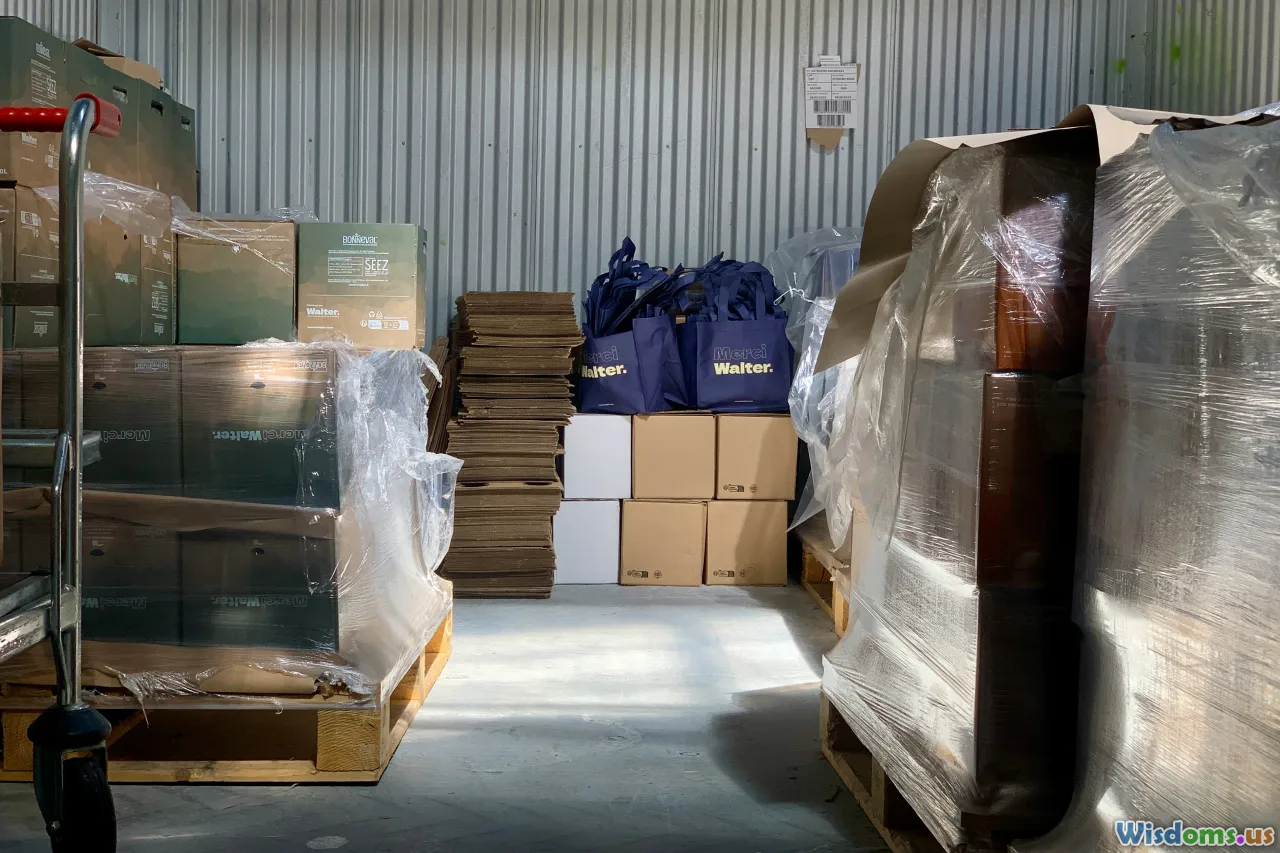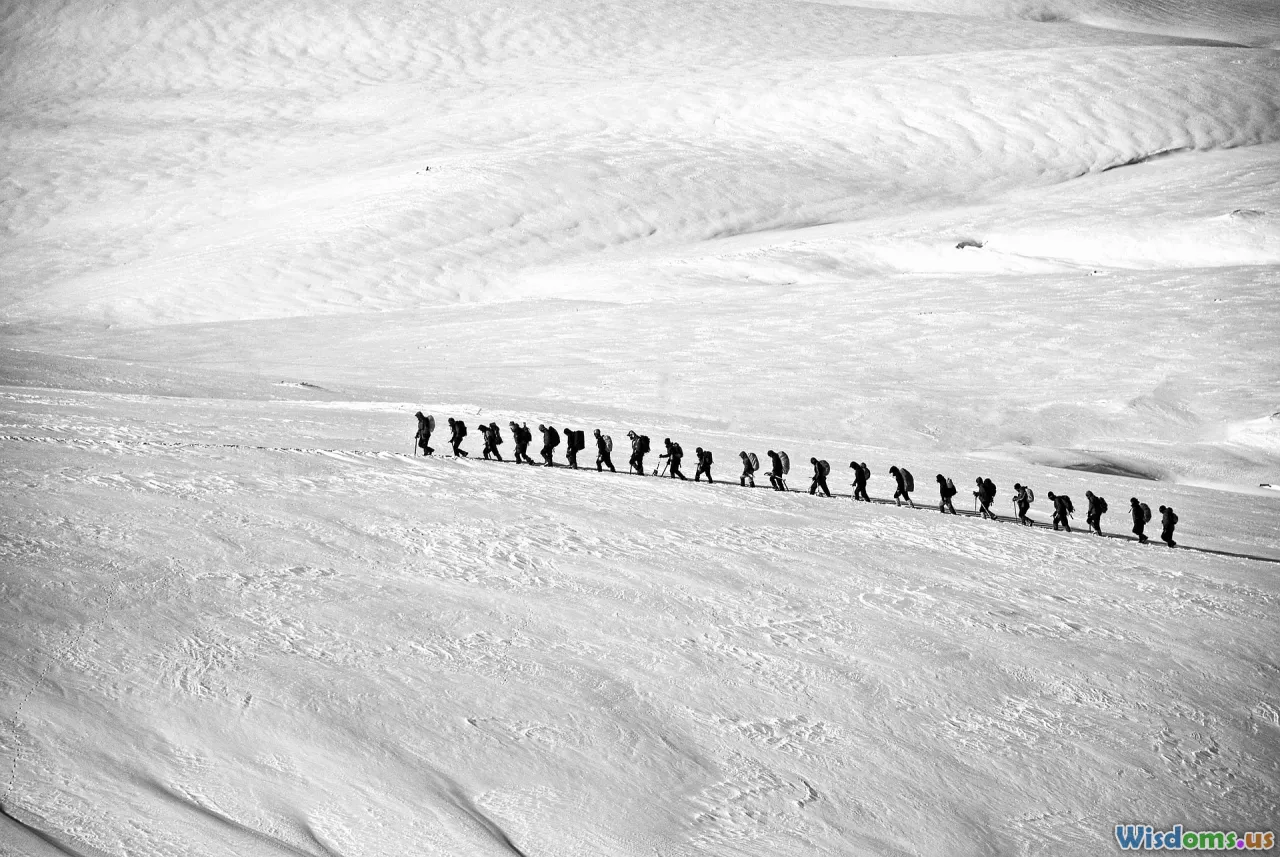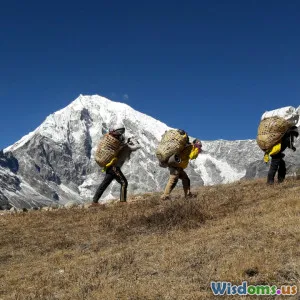
Choosing Your Expedition Team: Traits That Predict Success
17 min read Discover key traits to consider when selecting an expedition team for optimal success and safety. (0 Reviews)
Choosing Your Expedition Team: Traits That Predict Success
Whether you're planning a trek through remote jungles, a scientific voyage in the Arctic, or a high-altitude mountaineering challenge, the people you choose to journey with can make the difference between triumph and heartbreak. Expedition success hinges not only on logistical preparation or technical skills, but perhaps even more on the human element: the selected team. Let's explore the psychology, practicalities, and field-tested wisdom behind assembling an expedition team more likely to thrive — regardless of what the wilderness throws at you.
Beyond Skills: The Psychology of Cohesion

It’s tempting to focus on resumes packed with technical certifications—Wilderness First Responder, avalanche rescue, navigational prowess. Yet, time and again, expedition leaders cite psychological compatibility and group dynamics as the most crucial—but most overlooked—factors in team selection.
Consider the experience of the 1953 British expedition to Everest, immortalized for Edmund Hillary and Tenzing Norgay's historic summit. Yet, many credit the triumph not only to their physical preparation but to the harmonious team assembled by John Hunt. By balancing discipline with camaraderie, the group navigated harsh conditions and setbacks without fracturing.
Research in organizational psychology backs up the field experience: teams with strong intragroup trust are more innovative, reliable, and resilient, especially under stress. Expeditions, where unpredictability is the only guarantee, require members who manage conflict gracefully, support each other emotionally, and communicate directly.
Key Psychological Traits to Prioritize:
- Emotional intelligence
- Flexibility in attitude
- Constructive conflict management skills
- Genuine empathy and inclusivity
Many successful leaders, like Antarctic explorer Felicity Aston, utilize personality assessments (like the Myers-Briggs Type Indicator or the Big Five Personality Traits) as a data point, though these should complement, not replace, gut-level evaluation during team-building exercises or group pre-trip outings.
Physical Endurance is More Than Fitness

Endurance matters—but it’s not just sheer strength or a high VO2 max. Expeditions can involve weeks or months in rough conditions, carrying heavy loads, battling inclement weather, while sometimes lacking enough food, sleep, or warmth. Physical aptitude encompasses something deeper: the ability to sustain, recover, and adapt over time.
In the world of ultramarathon trail racing, for instance, not all finishes belong to those with the best marathons under their belts. Often, the finishers are those who meticulously trained their bodies for continuous physical stress, forcing themselves to practice with heavy packs or during adverse weather, conditioning not just muscles but immune systems, skin (to prevent chafing/sores), and injury response.
When considering candidates, look not solely at peak fitness, but at adaptability to extreme hardship:
Look For:
- Experience in multiday (or multiweek) outdoor pursuits
- Demonstrated flexibility with gear or nutrition
- Proven ability to recover from illness/injury while still contributing
- Sound personal fitness routines tailored for the expedition environment
Evaluate with deliberately tough shakedown trips, simulating key stressors your team is likely to face. Watch for how members help each other over the finish line.
Technical Skills: Depth and Complementarity

Every adventure has core requirements, from map-and-compass navigation to glacier travel, paddling, or advanced rock climbing. But stacking a team exclusively with expert mountaineers, for example, doesn’t guarantee success across the board.
Complementarity is vital. Consider diversifying expertise: perhaps one person excels with medical emergencies, another manages food logistics, and someone else is a whiz with technology (ham radios, GPS, or drones for aerial scouting). In the famed Shackleton Endurance Expedition (1914-17), the diversity of practical skills — meteorology, carpentry, seamanship, and rigging — became crucial as their ordeal demanded improvisation.
Make a matrix of the technical needs your specific expedition will encounter:
- Navigation in low-visibility/featureless landscapes
- Rope systems and safety in vertical terrain
- First aid for likely emergencies
- Wilderness cooking and water purification
- Communications and emergency signaling
How-To Tip:
- Host skills days where teammates teach and test each other — this builds mutual respect and uncovers weak links you can address ahead of time.
Remember, skills can be improved with time; eagerness to learn and help is harder to train.
Adaptability: Thriving in the Unexpected

Even the most robust plans can evaporate with a sudden storm, equipment failure, or half the party struck by food poisoning. The ability to mentally pivot is one of the strongest predictors of expedition functionality.
For example, NASA's astronaut selection process increasingly tests reactions to ambiguous, shifting scenarios. They're looking not just at abilities, but at "cognitive flexibility": What happens when the map is wrong? When we lose comms? When a key piece of technology fails and we improvise with what’s left in the kit?
This trait manifests in several ways:
- The willingness to change roles/front-line responsibilities across different situations
- Calm under uncertainty, avoiding blame games
- Creative problem-solving
- Openness to suggestions from unexpected sources (sometimes the best solution comes from the least senior member)
- The instinct to maintain group morale, even (especially) while plans change
Field exercises that intentionally break the plan, or forcing "what-if" thinking during team prep, can reveal which members thrive where others grind to a halt.
Cultural Sensitivity and Shared Values

With international expeditions and teams growing increasingly diverse, appreciating cross-cultural differences goes from "nice-to-have" to mission-critical. Interpersonal missteps in the field are not just awkward; they can quickly escalate into logistical, safety, or diplomatic crises.
For instance, consider summiting attempts on Denali: international teams have to mesh not only varying risk tolerance but differences in communication, daily routines, food preferences, and even religious observances — all in close quarters. A lack of sensitivity to these factors can foster resentment.
Actionable Advice:
- Discuss and outline core values as a team (decision-making, inclusivity, environmental stewardship)
- Hold cultural exchange workshops before the departure
- Encourage preparations like learning basic phrases in teammates’ native languages, or understanding dietary restrictions
A shared vision and the ability to respect differing perspectives provides a strong underlying glue — a trait explored in depth on polar expeditions, where months in confined spaces tested not only endurance but respect.
Communication: Clear, Honest, and Frequent

Expeditions unravel not for lack of capability, but when team members stop talking — or stop listening.
Legendary stories abound of nimble, charismatic leaders who shunned both favoritism and dictatorship, cultivating open dialogue. The Norwegian explorer Roald Amundsen famously sought input from all members before his South Pole journey, cementing buy-in and group resolve.
Teams that check in regularly, debrief each day, and embrace constructive dissent develop risk awareness and psychological safety. In contrast, silence about minor grievances often breeds major ruptures.
Tips to Enhance Team Communication:
- Use established protocols (e.g., check-in signals, roundtable updates)
- Nominate a designated listener or third-party "expedition ombudsperson" for sensitive topics
- Schedule formal feedback sessions
- Practice real-time comms via radios or hand signals before departure
Rehearsed and natural communication builds efficiency and trust, even in emergencies.
Leadership and Followership: Rotating Roles

While skilled leadership can steer a group through stormy literal and figurative weather, the unsung hero is often the supportive follower.
Expedition environments magnify the need for adaptive leadership—the flexibility to shift leadership duties as situations dictate. On the Greenland Ice Cap crossing by Ann Daniels, team members deliberately rotated leadership, allowing each person to exercise initiative and build empathy for the leader’s burdens. Shared leadership proved protective against burnout and loneliness, increased innovation, and developed greater mutual confidence within the ranks.
Essential Practices:
- Rotate daily roles: navigation, cooking, logistics troubleshooting
- Foster mentorship between newer and more experienced members
- Cultivate humility: train leaders to yield, letting others demonstrate expertise
Those willing to both lead and support without ego muddling the chain of decision-making foster strong, adaptable groups, as seen in recurrent Antarctic traverses.
Logistics, Reliability, and Detail Orientation

Every expedition is built on small details: resupplies, permits, inventory management, food and water caches, visa timelines, and insurance. Significantly, the determination to track minutiae maps closely onto overall reliability.
One famous mishap highlights this trait's importance: in a Himalayan trek, a missing tent pole (left behind during frantic packing) meant the team had to go without adequate shelter in severe storms. Whether double-checking gear manifests as meticulous equipment checklists or a knack for last-minute improvisation, attention to detail, and reliability in delegated tasks provides a backbone the group can trust.
What to Look Out For:
- Track record of dependability in smaller trips
- Effective note-keeping, inventory logs, and backup planning
- Habit of flagging concerns when even small things are amiss
Consider assigning a "quartermaster" or split responsibilities based on department strengths (one person for gear, another for food/medical, etc). Build habits of redundancy and extra checks into pre-trip and daily routines.
Humor and Positivity: The Invisible Lifeline

Gallows humor has kept more than one expedition from fraying. When sleep is elusive, or endless rain transforms once-inviting trails into rivers of mud, a team member’s timely joke or the sharing of a lighthearted story can buoy flagging morale and renew focus.
Veteran mountaineer Conrad Anker recalls a particularly rough storm on Meru Peak; the simple act of sharing beloved snacks and trading jokes in the tent, he says, was as important as any technical skill.
Actual Strategies to Cultivate Positivity:
- Include regular group rituals (morning songs, funny photo contests, celebration of milestones)
- Rotate morale officers: each day, one person designs an evening entertainment
- Recognize and celebrate small wins: a bearable weather window, a perfect camp site, a successful repair on the trail
Warning: forced cheer can be grating, but letting humor arise organically—and creating space for fun—builds mental resilience far faster than stoicism alone.
Building Your Roster: Practical Steps

Pulling theoretical insights into practical use, building an expedition team should proceed through a structured, iterative process:
- Create a Skills—and Traits—Assessment:
- Use both written and informal interviews to probe for attitudes, adaptability, and experience in adversity.
- Deploy scenario-based group exercises to reveal conduct under pressure.
- Run Real-World Simulations:
- Organize training weekends or shakedown trips under adverse conditions.
- Rotate leadership and logistics roles; see whose skills surface naturally.
- Intentionally introduce surprises (weather, changes of plan, gear loss) and observe the team’s reaction.
- Debrief and Discuss Fit:
- Invite feedback: ask each candidate what worked, what didn’t, and whether team values align.
- Probe for both strengths AND weaknesses, inviting vulnerability.
- Initiate Team Building Routines:
- Schedule pre-expedition events focusing on group meals, communication exercises, or even conflict resolution training.
Don’t hesitate to balance roles for personality fit, not just for skills coverage—a technically complete team can still falter if joint temperaments clash.
At its core, a successful expedition is an intricate dance of preparation, grit, and trust. The landscape may be wild, but it is the collective spirit and adaptability of your team that determines how you’ll write your story on it. Seek out those with not just complementary strengths, but with the humility, resilience, and humanity to carry you—and each other—through the toughest terrain.
Rate the Post
User Reviews
Other posts in Expedition Planning
Popular Posts
















